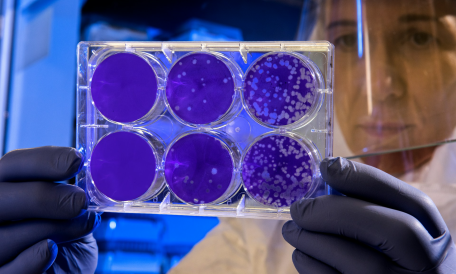Artificial intelligence (AI) could significantly speed up the detection of antibiotic-resistant bacteria, according to new research from the University of Cambridge.
The study, published in Nature Communications, demonstrates a machine learning model that can identify drug-resistant Salmonella Typhi from microscopic images, potentially shortening the time to diagnosis compared to traditional methods, as part of an effort to use AI to detect the disease and find new drugs to treat it.
“We believe that better diagnostics have huge potential to fundamentally transform healthcare and the pharmaceutical industry,” Meri Beckwith, co-founder of Lindus Health, a company focused on accelerating clinical trials that was not involved in the Cambridge research, told PYMNTS.
“Traditionally, diagnostics have been looked down upon by industry and investors because detecting disease has less commercial return than treating it with potentially long-term drug therapies,” Beckwith said. “As health systems come under increasing pressure to reduce costs and improve efficiency, that’s changing, and better diagnostics could play a big role here.”
The focus on prevention in healthcare is revitalizing the diagnostic technologies market. This shift creates new revenue opportunities for the evolving healthcare industry.
Searching for clues
Advances in AI-powered medical imaging technology are creating new business opportunities in medical diagnostics and drug development. In a University of Oxford study, researchers used a high-powered microscope to examine samples of S. Typhimurium exposed to different concentrations of ciprofloxacin, a common antibiotic. They identified five key image features that distinguish resistant from susceptible strains and used data from 16 samples to train a machine learning algorithm.
A computer program can determine whether bacteria are resistant to antibiotics without actually using antibiotics, and does so by growing the bacteria for just six hours, much faster than the standard 24-hour test.
“The beauty of our machine learning models is that they can identify resistant bacteria based on some subtle features in the microscopic images that the human eye can’t detect,” says Tuan Anh Tran, who worked on the study.
Commercial and industry implications
Potential applications of AI technology could have huge implications for the medical and pharmaceutical industries: rapid and accurate diagnosis of antibiotic-resistant infections could lead to more targeted treatment strategies.
“The valuable time saved could be used to contain the disease before it spreads,” Beckwith said. But he cautioned that more validation was needed: “Each application would need to undergo specific testing to demonstrate that it offers cost, accuracy and speed benefits over the current gold standard before being adopted.”
Drug-resistant bacteria are becoming a serious health threat worldwide. These “superbugs” have evolved to be resistant to common antibiotics, making infections harder to treat. Overuse and misuse of antibiotics in medicine and agriculture is accelerating this process. As a result, simple infections that were once easily cured can now become life-threatening. Doctors are running out of effective treatment options for some bacterial infections.
Our goal
AI can help doctors diagnose diseases more quickly and accurately in many areas of medicine.
Large tech companies and startups are racing to develop AI-powered tools that could transform healthcare. Google’s DeepMind, for example, has developed an AI system that can detect breast cancer from mammograms with better accuracy than human radiologists. The system reduced false positives by 5.7% and false negatives by 9.4% compared to human experts, according to a study published in Nature.
IDx Technologies received FDA approval for its AI-based system to detect diabetic retinopathy in 2018. The software analyzes retinal images and provides an instant diagnosis, potentially increasing screening rates in underserved areas.
MIT researchers have developed an AI model that can detect Alzheimer’s years before symptoms appear. By analyzing brain scans, the system can identify subtle patterns associated with the early stages of the disease, allowing for earlier intervention.
AI is also helping in the fight against COVID-19: Infervision’s AI software, deployed in Chinese hospitals, is quickly analyzing chest CT scans to detect signs of coronavirus pneumonia and help prioritize treatment.
The research team plans to study many more types of bacteria and antibiotics. They hope to develop a system that can find drug-resistant bacteria in samples such as blood, urine and saliva. This could help doctors better treat infections in the future.
“What’s really important, especially in a clinical setting, is to be able to take complex samples and identify susceptibility and resistance directly from them,” Sushmita Sridhar, who initiated the project while a doctoral student at the University of Cambridge and is now a postdoctoral researcher at the University of New Mexico and the Harvard School of Public Health, said in a news release. “This is a much more complex problem, and one that’s completely unsolved, even in clinical diagnostics in a hospital setting.”


